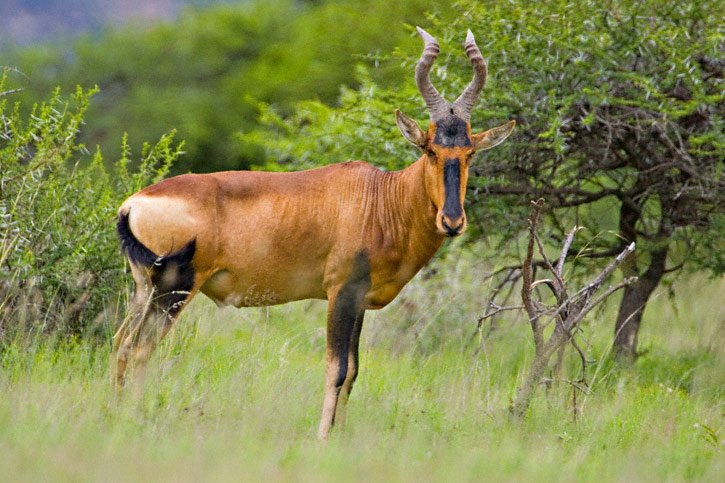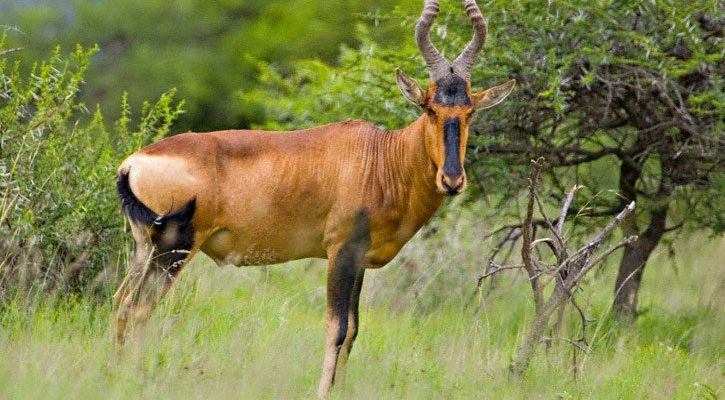
Picture a hearty, stocky antelope galloping gracefully across the savanna. Their long, slender legs and elongated heads might seem designed just for aesthetics, but there’s plenty more going on beneath that striking exterior. Understanding how smart a hartebeest is requires a dive into their behavior, social structures, and survival tactics. So, grab your metaphorical magnifying glass, and let’s unravel the delightful mysteries of the hartebeest’s mind!
What Is a Hartebeest?
Before we dig into their smarts, let’s get to know the hartebeest a bit more. These animals belong to the Bovidae family, which includes cows, goats, and other antelopes. There are several species of hartebeests, such as the African hartebeest, Korrigum, and Bubal hartebeest. They have a unique appearance with lean bodies, long legs, and a distinctive shape of their horns.
Hartebeests usually inhabit open savannas, grasslands, and lightly wooded areas across East and Southern Africa. Their adaptability to various environments shows their resilience, which is often a sign of cognitive flexibility. Imagine being thrown into a new school, but instead of struggling to fit in, you’ve got the social smarts to make friends easily and enjoy your new surroundings. That’s the hartebeest spirit!
Social Structure of Hartebeests
You might be wondering what makes a hartebeest tick, especially when it comes to their social lives. Hartebeests live in herds, typically ranging from a few to several dozen animals. Within these herds, they form strong bonds with each other. This social structure provides advantages, like protection against predators and collaborative grazing.
When it comes to social interactions, these animals showcase interesting behaviors. They engage in grooming and signaling, which strengthens their connections. It’s like how we might lean on friends during tough times or share a meal together. This social cohesion not only enhances their survival chances but also requires a level of mental understanding—a sign of their intelligence.
Hartebeests and Their Environment
So, how smart are hartebeests when it comes to navigating their surroundings? Quite a bit! These animals adapt to changing environments and can recognize various types of vegetation. They have a keen sense of smell and vision, which helps them spot potential threats and food sources.
Hartebeests are herbivores and primarily graze on grasses, but they also exhibit a fascinating ability to learn what food sources are available during different seasons. They may remember where to find the best grazing spots, effectively using both memory and spatial awareness. This is akin to how we might recall a favorite restaurant and decide to revisit it based on previous experiences.
Communication Among Hartebeests
Communication is another exciting aspect of hartebeest behavior. These animals use vocalizations, body language, and even facial expressions to convey messages to one another. For instance, they might emit a series of grunts and snorts to alert the herd of a nearby predator. It’s similar to how friends may whisper to each other to share important news in a crowded room.
Their ability to communicate effectively demonstrates their social intelligence. Hartebeests can gauge the emotions and intentions of fellow herd members. This skill is crucial for maintaining harmony within the group and making collective decisions, like when to migrate to safer areas or when to graze together.
Learning and Problem Solving
When we think of intelligence, learning and problem-solving abilities often come to mind. Hartebeests showcase cognitive skills that enable them to adapt to challenges in their environment. For example, they can learn from experience, which helps them avoid dangers or find better food options.
Let’s say a hartebeest encounters a water source. If they find it safe and plentiful, they’ll remember that spot and return to it. However, if they face danger near that area, they’ll likely steer clear in the future. This capacity for learning from experiences reflects a level of intelligence that’s often underestimated in lesser-known species.
Comparing Hartebeests to Other Antelopes
You might be curious about how hartebeests stack up against their relatives. Other antelope species, like gazelles or impalas, also exhibit social structures and learning capabilities. Gazelles, for instance, are known for their agility and quick reflexes, making them superb at escaping predators.
However, hartebeests are excellent at adapting to their environment and forming strong social bonds. While gazelles might rely on speed, hartebeests use their intelligence to make informed decisions about safety and food. This shows that intelligence can manifest in various forms across different species, each with its own strengths and survival strategies.
In conclusion, the hartebeest might not be the most celebrated creature in the animal kingdom, but its intelligence is nothing to overlook. From their clever social structures and effective communication to their ability to learn and adapt, these antelopes display a remarkable blend of cognitive skills.
So, next time you come across a hartebeest in your travels or wildlife documentaries, remember there’s a lot more going on in that head than meets the eye. Like any good friend, they might surprise you with their smarts and resourcefulness. It’s a beautiful reminder that intelligence comes in many forms, and every creature has its unique way of navigating the world.

